Thomas Patrick O’Hagan, Mosquito-Ponce Inlet Lighthouse’s second principal keeper (1893-1905), and principal keeper at Amelia Island Lighthouse (1905-1925), was stationed at many other U.S. Lighthouse Service stations during his fifty year career. Two of his sons became keepers, and a third worked as a mate on USLHS tenders. O’Hagan has some fascinating stories to share about his life at different stations throughout his long service, his extensive contacts with keepers at other stations, Lighthouse Service officials, and of course, his sons’ and family members’ tenure at other lights in the Fifth and Sixth districts. On a side note, the O’Hagan family continued to be represented at the Amelia Island Lighthouse until just recently by Helen O’Hagan Sintes who is Thomas Patrick’s granddaughter and Thomas John O’Hagan’s daughter, as the third generation of Amelia keepers. For many years, Helen graciously shared her knowledge of the Amelia Island Lighthouse and her family’s story with visitors as historian and Coast Guard Auxiliary lead volunteer at Amelia Island. She donated family memorabilia and sat for several informative oral histories with Ponce Inlet Lighthouse and Museum staff. Dear to us all, Helen remains an active member of the Florida Lighthouse Association.
January 5, 2019
John F. Mann, Lead Docent, Ponce Inlet Lighthouse and Museum
Tuesday, March 29, 1927
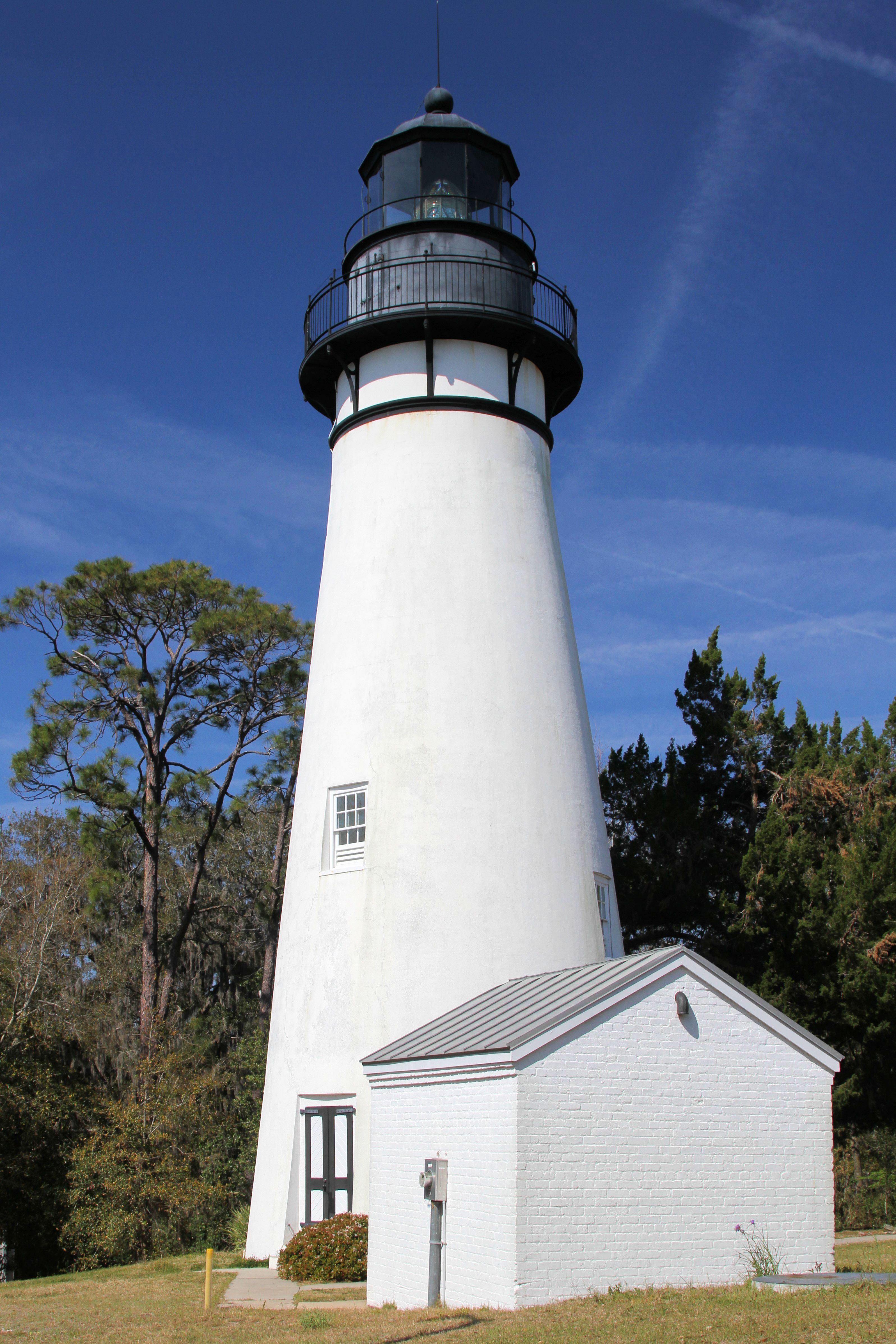
Warm, light to moderate breeze, S. to S.W. (can’t break a life-long habit of keeping the log) on a spring morning on the porch of my new little house down the lane from the Amelia Island Lighthouse. In my last little bit of writing, I promised that I would tell the story of the peripatetic Amelia Island Lighthouse. Now, I know that a few of the cast-iron towers have been unbolted and moved around from time to time like that one up in Cape Cod that went all the way to California, sat at the Depot in San Francisco Bay for six years, and now is going to be placed south of San Francisco. But I’m betting that my Amelia Island tower, which started in service in 1820 only a few miles across the Saint Mary’s River on Cumberland Island in Georgia, is the only brick tower ever to be disassembled, moved from one state to another, and rebuilt. And from what I understand, Winslow Lewis, the original builder in Georgia, moved it some eighteen years later here to Amelia, reconstructing it in late 1838 to 1839.
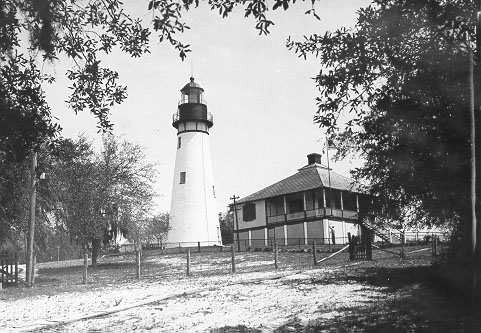
I know that during his time, Mr. Lewis established standardized plans for his towers, with certain heights, sixty-five feet, and fifty and down to twenty-five feet and so on. That could work in the Northeast, but it wouldn’t make too much sense along the coasts from New Jersey on down. I also think it can be said many of Mr. Lewis’ towers don’t seem to have much luck staying upright. A good example, the first Mosquito Inlet lighthouse, looked very much like Amelia and pretty much all of Lewis’ towers with a typical whitewash sometimes on stucco over the brick and a black, iron lantern room.
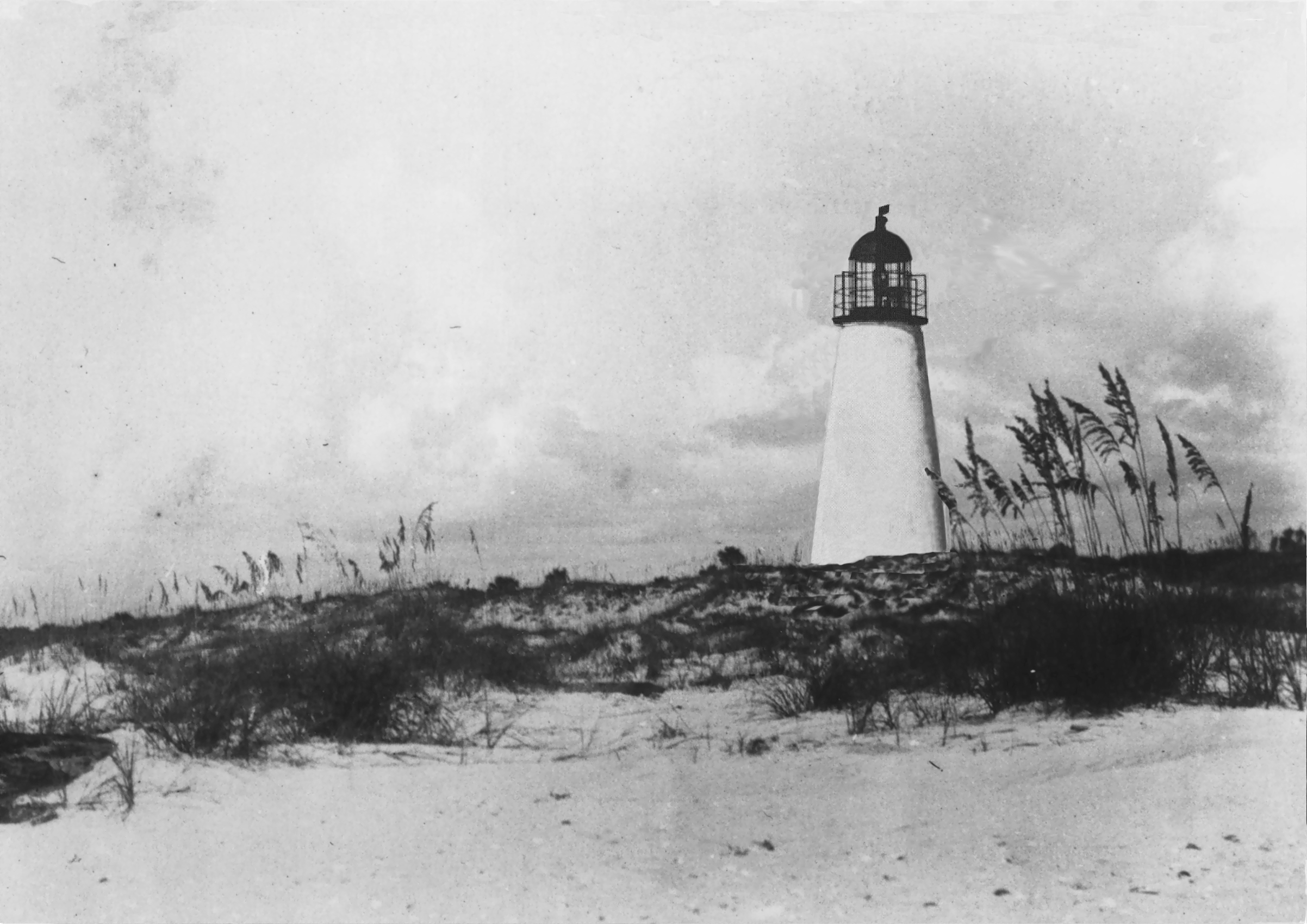
That first Mosquito tower, 45 feet tall, was built by Lewis in 1835 on a dune on the south side of the inlet, or the New Smyrna side. Before it could be fully supplied with oil and lit, it was hit by several storms which washed away the sand dune around most of whatever foundation it had, if any, and seriously undermined the tower. All that might sound unkind or critical about Lewis, but that was frequently the trouble with his towers, and his work. And whether all the storms that happened that year had anything to do with Halley’s Comet, which was widely seen at that time according to the Almanac, is a different matter.
One storm lasted seven days, really not all that unusual along that coast. That late October storm completely washed away the keeper’s residence, all of the family’s belongings, ate away at the dune the tower was built on, and further angled the tower. Having sold his part of a plantation and having moved to the new lighthouse station upon his appointment as keeper, William Williams, his wife, Fanny, his children and servants were, according to him, “made homeless, without a change of garments, and dependent on the kindness of others for shelter.” To make matters worse, all of this was happening during the Florida Wars with the Seminole people. In fact, a month later on Christmas Day of 1835, a Seminole raiding party burned homes and plantations in that immediate area. The Indians eventually wound up at the light station and ended up setting fire to the tower’s wooden door to get in. They tried to burn the wood steps and did break all the glass in the windows and the lantern. If the oil had been delivered, surely the tower would have been burned completely. The Seminoles even discovered where Williams had hidden away the lamp’s reflectors, and local lore has it that their leader wore one of the reflectors as a head or chest ornament during a battle a month later at a plantation.
Williams, son of a local planter, was active in local politics as a Justice of the Peace and a Notary. He went on to considerable fame later in life, becoming a member of the Florida legislative council that drafted the Florida Territory’s first constitution. He was later elected Sherriff of what was then East Orange County, a part of the broken up Mosquito County, a huge area consisting at the time of parts of several present counties here in north central Florida. That East Orange County is now called Volusia County. However, the best part of the Williams’ saga is how he revenged himself on the Indians, but not without some consequence. Williams joined a troop of Florida Militia called The Mosquito Roarers, organized to fight the Seminoles and to protect their families and property. At one encounter with the Seminoles, he and his fellow militia found themselves cut off with their backs to the river while retreating to their boats. In a final act of spite, Williams dropped his trousers and exposed his hind end before boarding. A Seminole musket ball found its way, lodging itself into his fleshy seat. It is said he limped slightly for the rest of his life, but always laughed at himself when telling the tale.
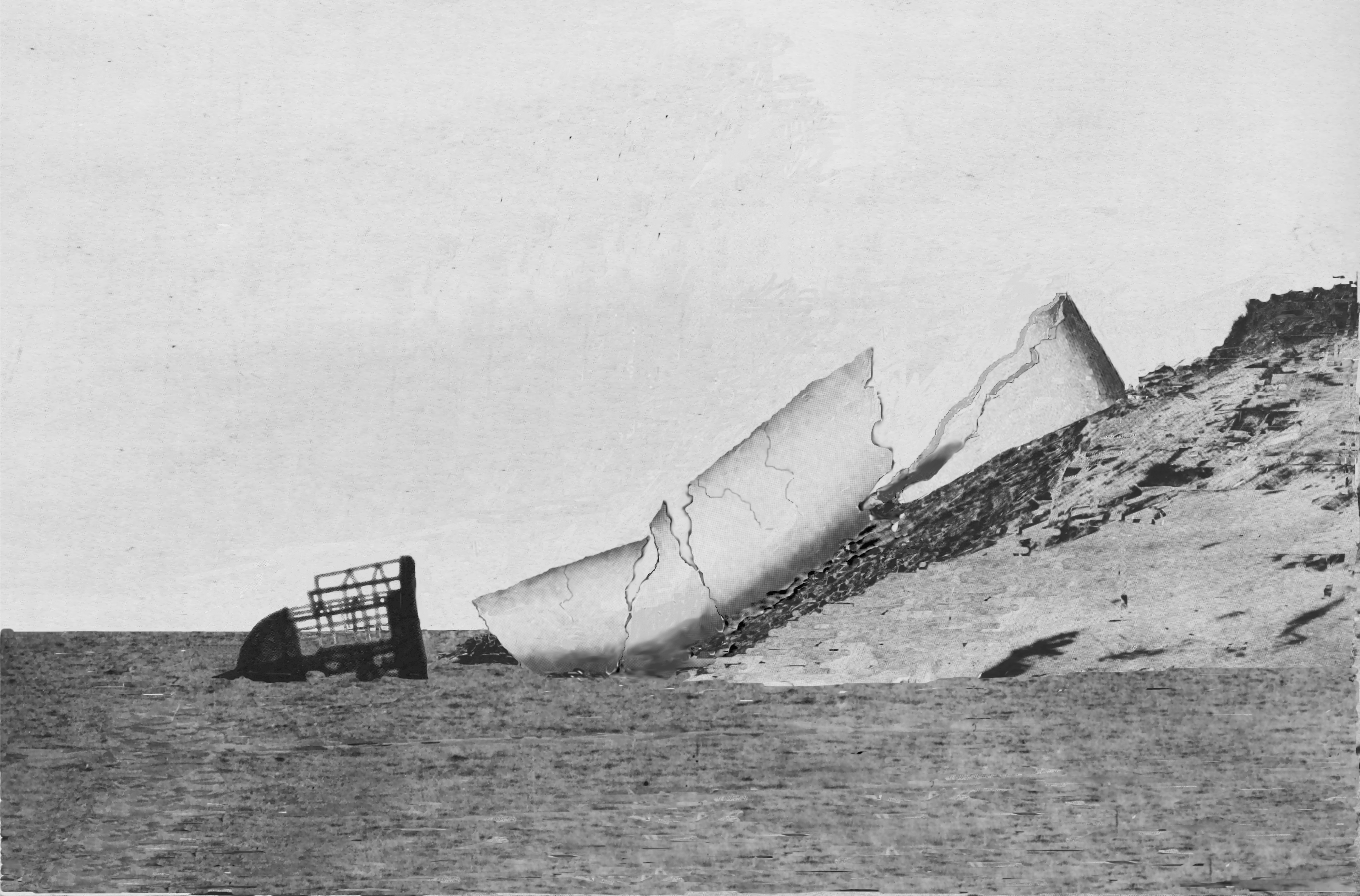
The 1835 Mosquito Inlet tower was completely washed away by erosion from another storm in April of 1836. The Lighthouse Establishment thought seriously about replacing it, but given the ominous uncertainty of Seminole raiding parties harassing people and plantations all over that part of the Territory, it never happened. It was forty-six years before another lighthouse would be built at that inlet.
When it is all said and done, the 1887 Mosquito Inlet Lighthouse tower was the most beautifully proportioned and well-built of all the tall brick towers. I didn’t expect to serve there, and that’s a story in itself I’ll tell, but I have very good memories of living and working there from December 1, 1893 to September 23, 1905.
******
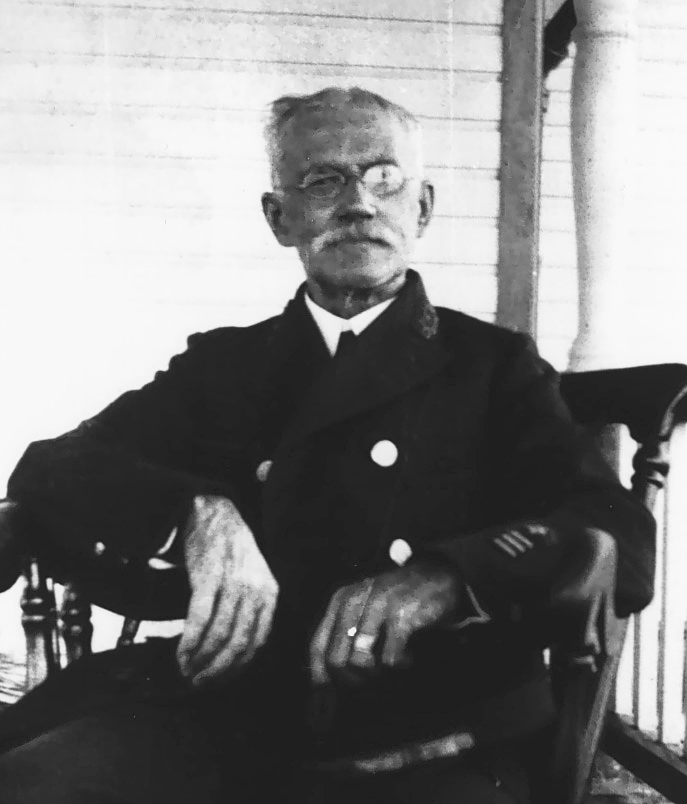
Information gathered from Ellen Henry’s soon to be published new history of the Ponce Inlet Lighthouse; McCarthy and Trotter, Florida’s Lighthouses, University Presses of Florida, 1990; Taylor, Thomas, Florida’s Territorial Lighthouses 1824-1845, Florida Sesquicentennial Publication 1995; Taylor, Thomas, Florida Lighthouse Trail,2001, Pineapple Press; and Oral Histories given by Helen Sintes to the Ponce Inlet Lighthouse Preservation Association.

Candace was the US Lighthouse Society historian from 2016 until she passed away in August 2018. For 30 years, her work involved lighthouse history. She worked with the National Park Service and the Council of American Maritime Museums. She was a noted author and was considered the most knowledgable person on lighthouse information at the National Archives. Books by Candace Clifford include: Women who Kept the Lights: a History of Thirty-eight Female Lighthouse Keepers , Mind the Light Katie, and Maine Lighthouses, Documentation of their Past.


Interesting how familiar O’Hagan was with the history of the light stations he served at.